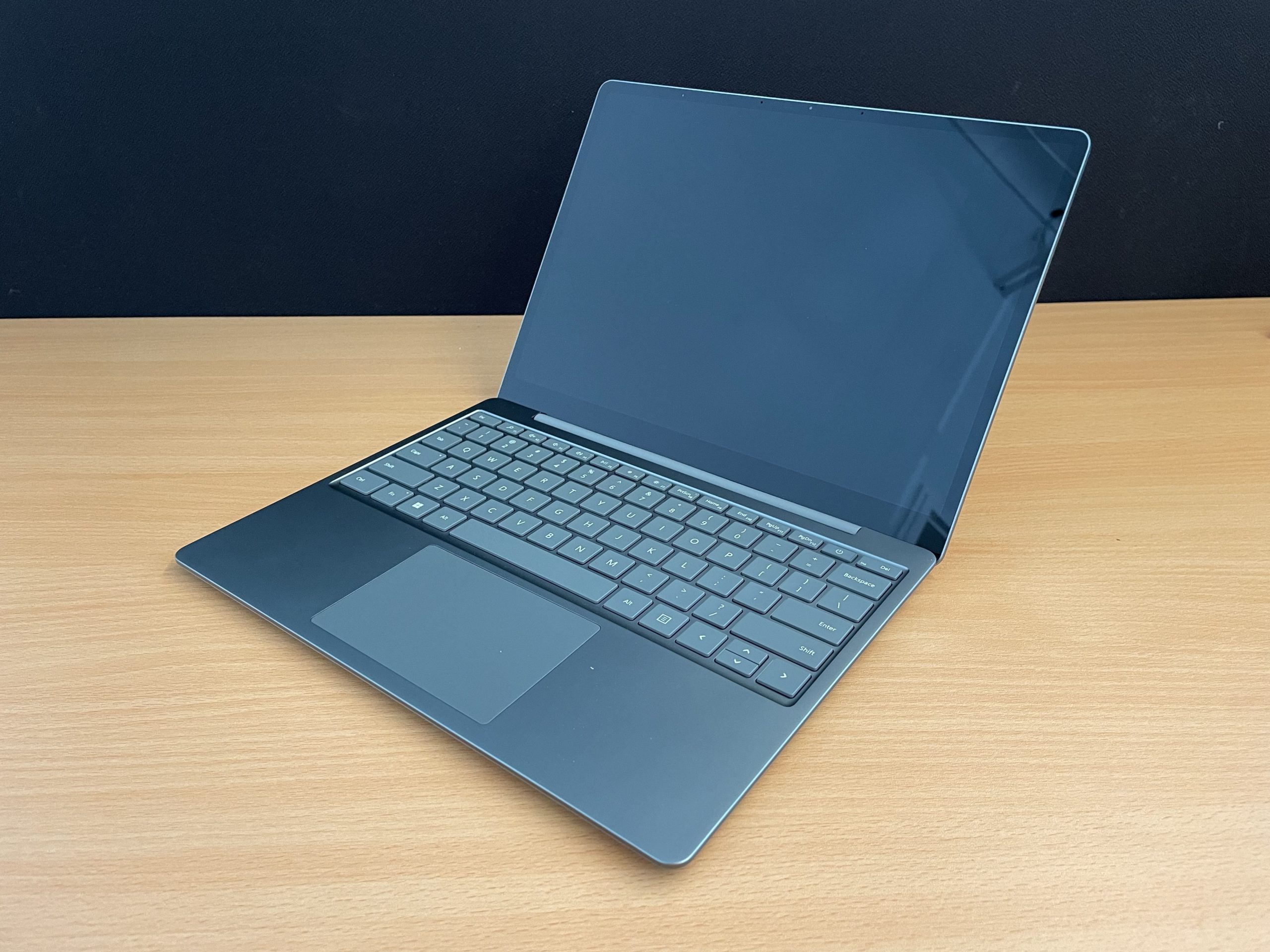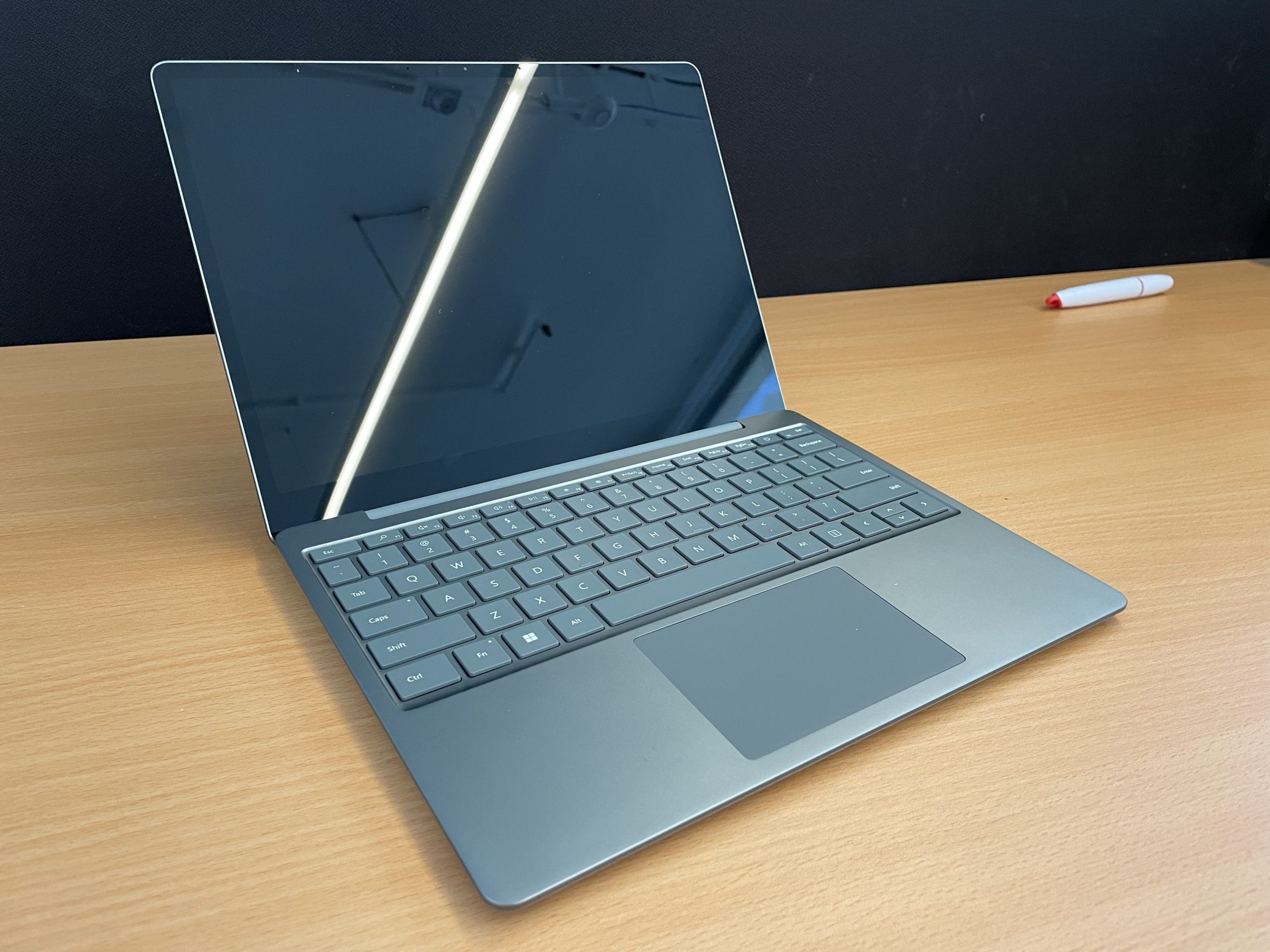
If you’re after a Microsoft Surface product and you’re looking for something with a bit more punch than the “budget” friendly Surface Go line, and something a little more affordable than the top end Surface Laptop range, the Surface Laptop Go is probably where you’d be looking.
The features that made Surface popular in the first place – including the 3:2 aspect ratio display – are found here, including a snappy 11th Gen Intel processor and a few tweaks, including a handy fingerprint sensor for those who don’t want to rely on facial recognition.
Also found here are features which stand it apart from the Surface Go tablet range which might make it more appealing. For example, if you like Surface but prefer a laptop form factor, this is the way to go. I for one love Surface devices – and have bought plenty – but the flimsy keyboard covers are definitely not for me If you’re looking for a more budget friendly option, that’s exactly where the Surface Laptop Go 2 sits, and it does a mighty fine job of being a powerful laptop for those who need on-the-go productivity.
For starters, the Surface Laptop Go 2 is tiny; it’s just 1.57m thick, and the footprint is 27.94cm (or 11 inches) by 20.5cm (or 8.1 inches). This is definitely not a wide or big screen laptop, but if you’re someone who mixes working on the go – where a small, lap-friendly device is key – with working in the office, one only needs to pair the Laptop Go 2 with a Surface Dock, and you’ve instantly got a desktop-class machine.


Surface Laptop Go 2 comes with Windows 11 out of the box which actually makes the laptop feel pretty snappy; I’ve found Windows 11 to be much faster than Windows 10 on the same hardware in a number of cases now, and the Laptop Go 2 is no exception. However, as we’ll get to a bit later, the lack of RAM can slow things down a bit if you do too much.
From the previous Laptop Go, however, there are some things unchanged. The same 3:2 aspect ratio display used in the original appears here. The 12.4-inch diameter falls just short of full HD, and while the screen is perfectly serviceable for daily use, you may find that some apps may look slightly blurry or low-res. On an external monitor, however, the difference of course disappears.
The screen is what you’d expect from a Surface though; touch input, it’s bright, and the colors are bright and vivid though it’s a bit hard to get past the mushy resolution. The keyboard, too, is a joy to use but there is something I’ve grown to love on other Surface Laptops .. a backlit keyboard .. which is notably missing here. Backlighting isn’t complex or premium and it’s omission is frankly a little odd.
Fortunately, the key mechanism is suitably comfortable to use and the trackpad – as with most Surface devices – is fairly generously sized making it easy to use if you don’t have or would rather not use a mouse.


Windows Hello gets a fingerprint sensor instead of an IR-powered facial recognition camera and this will please some and disappoint others. For me, I find facial recognition works just fine almost always, but a fingerprint can be snappier and more accurate much of the time too. I’d rather my daily laptop – a Surface Laptop 4 – had fingerprints instead of an IR camera (which sometimes fails to work anyway), but that’s how it is.
There is still a camera there – for the obligatory COVID-era video team meetings – and while the audio experience has been given a kick up, with dual field-sensor microphones to improve the audio capture for your far flung colleagues, the camera is still a spud-cam-esque 720p affair that is best left to postage-stamp video frames for video calls rather than being blown up full screen.
Connectivity is one area where Surface devices have always been a bit disappointing. The road warrior will bemoan the lack of HDMI (or in fact any display ports), the lack of an Ethernet jack, or really the lack of just about any ports. Fortunately there’s a USB-A, a USB-C and a headphone jack on the left, and a Surface Dock connector on the right but… to me it’s not quite good enough.
A laptop these days is so much more than a purely portable these days, and not having some of the most common ports needed seems like an omission. It wouldn’t be hard to include a HDMI port and folding Ethernet jack in the Surface Laptop Go 2 frame (or, indeed, in any Surface product) but – like Apple – Microsoft just doesn’t do it.
Instead, you’re forced to make do with 3rd party adapters, USB-C docks (which can be quite expensive) or proprietary Surface docks (which can be even more expensive, and not especially portable). To me this is a huge omission and one which may make the Surface line as a whole unsuitable for some.
So what’s inside?
Surface Laptop Go 2 starts at $1,099 with an Intel Core i5-1135G7 CPU, just 4GB of RAM and 128GB storage. At $1,199, you get 8GB of RAM (still not enough), and $1,299 increases your storage to 256GB. At this tier, the Surface Laptop Go 2 is almost good enough… but for me the lack of RAM is what really let this down. I can make do with an i5 – in fact, most people can – but RAM is what makes a PC these days and 8GB just isn’t enough for anyone.
On the plus side, though, like many ultra-portable laptops the battery life is simply astounding, easily lasting a full work day and more without the need for a charge. Just as my daily does – the Surface Laptop 4 – the Laptop Go 2 runs very frugally on the juice, and often I find I’ve forgotten to plug it in when using it in the office and the only indication that it’s probably time to go home is that the battery runs low around 4pm.
Not bad.
All in all, the Surface Laptop Go 2 is an evolution – rather than revolution – of the original Surface Laptop Go, and although the processor is a little quicker and some of the parts are user replaceable (to extend its useful life a little), it doesn’t feel all that new.
You might think that means I don’t like it very much.
You’d be wrong.
For the price, this is an excellent introduction to the Microsoft Surface line, and it earns its place as a budget offering for students, work users and casual users alike. It’s not a power house – and at the price, nor should it be – but it’s eminently portable, easy to use and carry about without having to even think about packing a power cord or anything else at all.
With that in mind, it’s easy to recommend the Surface Laptop Go 2 as a reasonable laptop around the $1100-1200 mark. However, if you’ve got a little more to spend – maybe as little as a couple of hundred bucks – the Surface Laptop 4 range is within reach and a bit more capable all round.
Surface Laptop Go 2 from Microsoft is available on the Microsoft Store Australia, and will – soon – be available in retailers around the place as well.